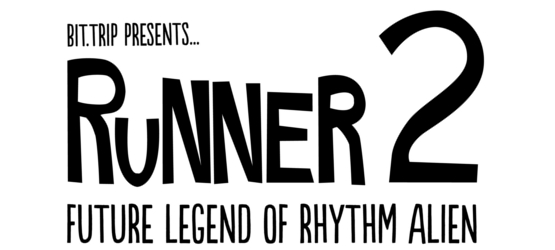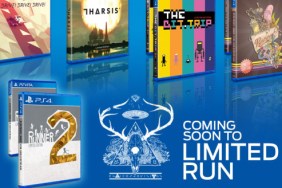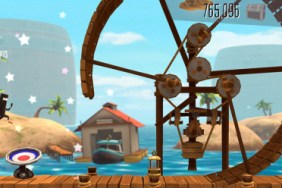Gaijin Games’ Bit.Trip series was one of the first major franchises to transcend the indie game barrier, becoming one of the biggest successes on Nintendo’s WiiWare and eShop, and has become a huge hit on Steam with their PC and Mac versions. Of that series of games, Bit.Trip Runner was definitely a major standout as it introduced players to the central protagonist, Commander Video, and demanded lightning-fast reflexes in order to progress through the game. Bit.Trip Presents…Runner2: Future Legend of Rhythm Alien is the first Bit.Trip game that has made it’s way to the PS3, and introduces a whole host of changes and new additions to the formula. The most welcome of which is the introduction of a gradual tutorial system, and a more flexible difficulty curve.
For the uninitiated, the Bit.Trip games have all focused on rhythm based mechanics, where a player’s actions during the course of the run influences the background music and beats, with platforming elements being introduced in Bit.Trip Runner. The story of Runner2 picks up where the original game left off with the intrepid Commander Video and his team of heroes chasing after the villain, Timbletot.
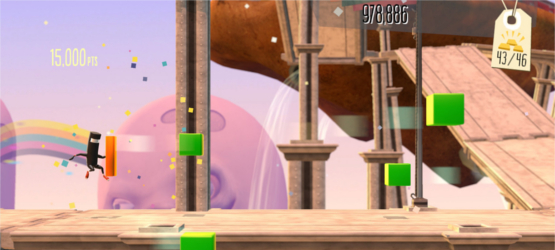
Unlike the previous game, Gaijin Games has embraced fully 3D models along with a children’s storybook aesthetic that makes the levels pop with vibrancy and is evocative of LittleBigPlanet. The story is also told through cartoony cutscenes that have some great artwork and are narrated by Charles Martinet, who you may know better as the voice of Mario, Luigi, and a whole host of other Nintendo characters. In addition to all of the snazzy scenery and characters, there are also numerous new implements to test your mettle as you move through the levels.
In Runner2, Commander Video has his old assortment of tricks from the previous Runner game. He can jump, glide, punch, and duck his way through obstacles all with simple presses of the D-pad or the face buttons. To this similar formula, Gaijin Games expands on Commander Video’s repertoire by creating situations where you have to use these moves in tandem with the game’s new mechanics. At first, this can seem daunting, especially if you haven’t played a Bit.Trip game in a while….or ever.
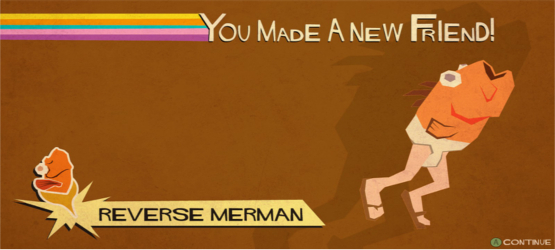
But rest assured, while it may be difficult to keep straight which enemies to jump over and which ones to duck under initially, by the time you reach the end of the game you’ll be duck-jumping, blocking, and duck-kicking all while grinding on rails or being blown around by giant fans or performing loop-the-loops without even a second thought. There is one small caveat though in that there are times where the button detection or animation priority can interfere with the timing of a quick succession of movements. Unfortunately, this can cause you no small amount of frustration, but fortunately it doesn’t happen often enough to be game breaking or detrimental to the overall experience. Despite this one drawback, Runner2 improves significantly upon its predecessor by introducing these new mechanics to you in a very deliberate and measured way.
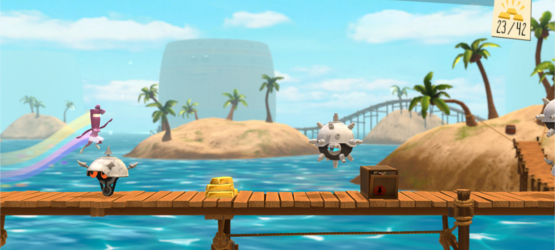
Unlike it’s predecessor, Runner2 is much more accessible for new players for two reasons. First, the game now features checkpoints within levels. This significantly reduces the amount of screaming and hair-pulling you’re bound to do when the game starts getting very demanding of your finger dexterity. The second reason is that there’s also an overall difficulty switch available from the in-world map. For the most part, seasoned Bit.Trip players will have no problem setting the game to ‘Just Right’ or ‘Rather Hard’ while making their way through the levels. Changing the difficulty only changes the possible hi-score you can get on a particular level which really only effects your leaderboard standings (insofar as I could tell anyway). Additionally, purists can also opt to just jump over checkpoints within the levels for an added challenge and a point bonus.
There are also more collectibles to grab this time as you make your way through the game’s 5 uniquely themed worlds. There are the usual gold bar pickups, which can be used to unlock additional levels and add special musical chimes in sync with the background music, but there is also an element of exploration, as some levels have secret exits and branching paths that can lead to additional costumes. Special levels also grant access to bonus characters like Commander Girl Video or Reverse Merman (a personal favorite). Another really cool addition, are the hidden Famicom carts present within some of the levels which give access to special challenge stages that are rendered in a retro pixelated look.
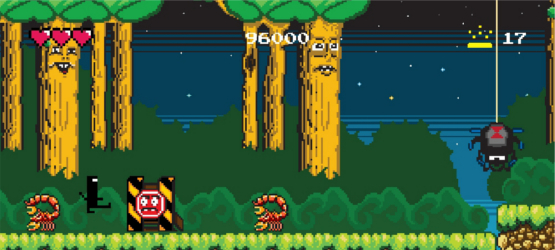
Of course, the ‘one more time, one more game’ mantra of the Bit.Trip series is tied closely to its music. Here again, Runner2 does not disappoint. The soundtrack is made up of original works that instrumentally add a very different flavor, not only level to level, but also world to world. As an example, world one features synth instruments with some airy accompaniment, given that world one has a cloud based look. Level two instead plays with more of a Rastafarian or reggae inspired mix with steel drum accents given that it’s a water world. Some of the tracks were even composed by Rich Vreeland, who you may know as Disasterpiece. His credits include the soundtrack to Phil Fish’s indie game darling, Fez, among others. In fact, the music can be so good that you may find yourself running into obstacles as you get lost in its rhythmic and melodic progression.
Bit.Trip Presents…Runner2: Future Legend of Rhythm Alien is a fantastic debut for Gaijin Games on PSN. Its deep and engaging gameplay presents more than enough of a challenge for seasoned Bit.Trippers while also opening its arms to new players curious to try it out. The plethora of gameplay mechanics is introduced so methodically that you won’t even realize the complexities of the actions you’re performing until you suddenly mess up. It’s sense of humor, vibrant aesthetic, and engaging soundtrack acts like a warm blanket wrapped around your shoulders constantly tempting you to challenge and push yourself. Frankly, if this is the evolution of the music and rhythm game genre, then I, for one, can’t wait to see more.
-
Gorgeous environments and cartoony cutscenes with narration by Charles Martinet
-
Level of challenge that is accessible to players of all skill levels.Â
-
Amazing soundtrack that plays to the strengths of the world and level design.
-
Quirky cast of characters.
-
Very high replay value.
-
Some button detection and animation priority issues which can be frustrating in sections where lots of quick presses are required in succession.Â
